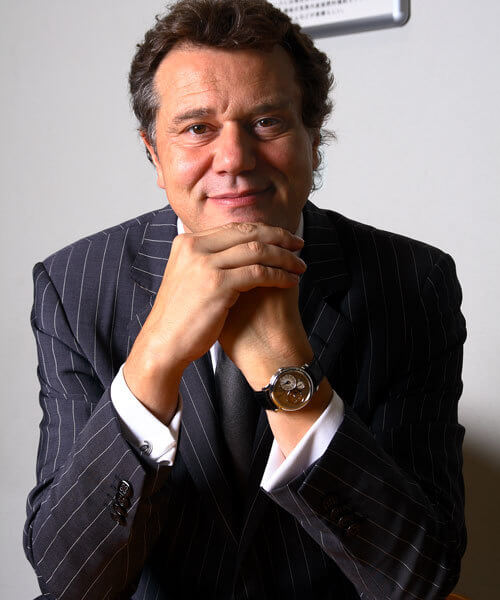For François-Paul Journe, nothing is ever written in stone, other than the principles that govern his “Invenit et Fecit” timepieces. Just back from a tour of Asia, he looks back over recent events including the International Timing Competition held by the Le Locle watch museum.
François-Paul Journe: It was out of the running even before the competition began… which makes me think the firms entering two watches were right to do so! As I’ve said before, the very least a watch can do is to give the right time. Hence why I was interested in a “competition” based on an objective principle, as opposed to the various awards which are usually subject to a jury decision and consequently a subjective judgement. Winning this kind of timing competition is the minimum one can expect from anyone claiming to make precision timepieces.
I think this means the competition remains wide open and that we can do better still. Both the winning timepieces underwent intensive adjustment, unlike ours as, to be perfectly honest, the deadline went clean out of my head. That said, our Chronomètre Souverain was in perfect working order when we sent it off. Three weeks later, its rate was varying by 17 seconds a day, which isn’t a disaster in itself, provided the variation remains stable. The balance spring had lost its resistance during adjustment, and when its elastic memory returned, the watch bolted, so to speak. I did go on to calibrate it a second time and was highly satisfied. Still, this kind of setback is all part of the game. It’s a bit like in the cartoon, Those Magnificent Men in their Flying Machines: anything goes.
You might at first think precision was no more complicated than boiling an egg. The difference with competition watches is the amount of time spent on fine adjustments, which isn’t a very creative activity. This is why I always aim for simplicity in my timepieces. If I incorporate too many parts, I know it won’t work. Ironically, simplifying complications makes the task more difficult. Take my Grande Sonnerie model for example. It includes an innovative mechanism which protects the timekeeping system when the power reserve is diminishing, yet there are just 450 parts. My aim was that this watch should never stop functioning because of something the wearer has done. Should it come back to us, it would be because of an error on my part.
Yes, and has done for the past 35 years. When I started making my own watches, after years restoring antique timepieces, I never made more parts than necessary so as to facilitate the task. Like George Daniels, I keep all the reject parts from that time as a reminder that every single one can cause a problem. Which is why I use the minimum. Generally speaking, when I think of a complication, I define the concept then I sketch the dial. The idea is to establish a harmony that can’t wait until the mechanical part is ready. Then, and only then, do I set to work on the movement. With experience, I get it right 95% of the time. The dial is the first thing that leaps to our attention. Without balance between forms, and this can be sufficiently self-evident as to go unnoticed, we have not reached our goal.
We take part in competitions to win, meaning we enter timepieces we believe can clinch first prize. This year, for example, I’ve submitted four timepieces to the Grand Prix d’Horlogerie de Genève: the Chronomètre Bleu in the Men’s category, the Vagabondage II in the Design category, and two models, the Chronomètre à Résonance and the Répétition Souveraine, in the Complications category. As the winner of the Aiguille d’Or in 2008 and therefore a member of the judges panel in 2009, meaning of course that I couldn’t take part, I fully intend taking home at least one prize.












